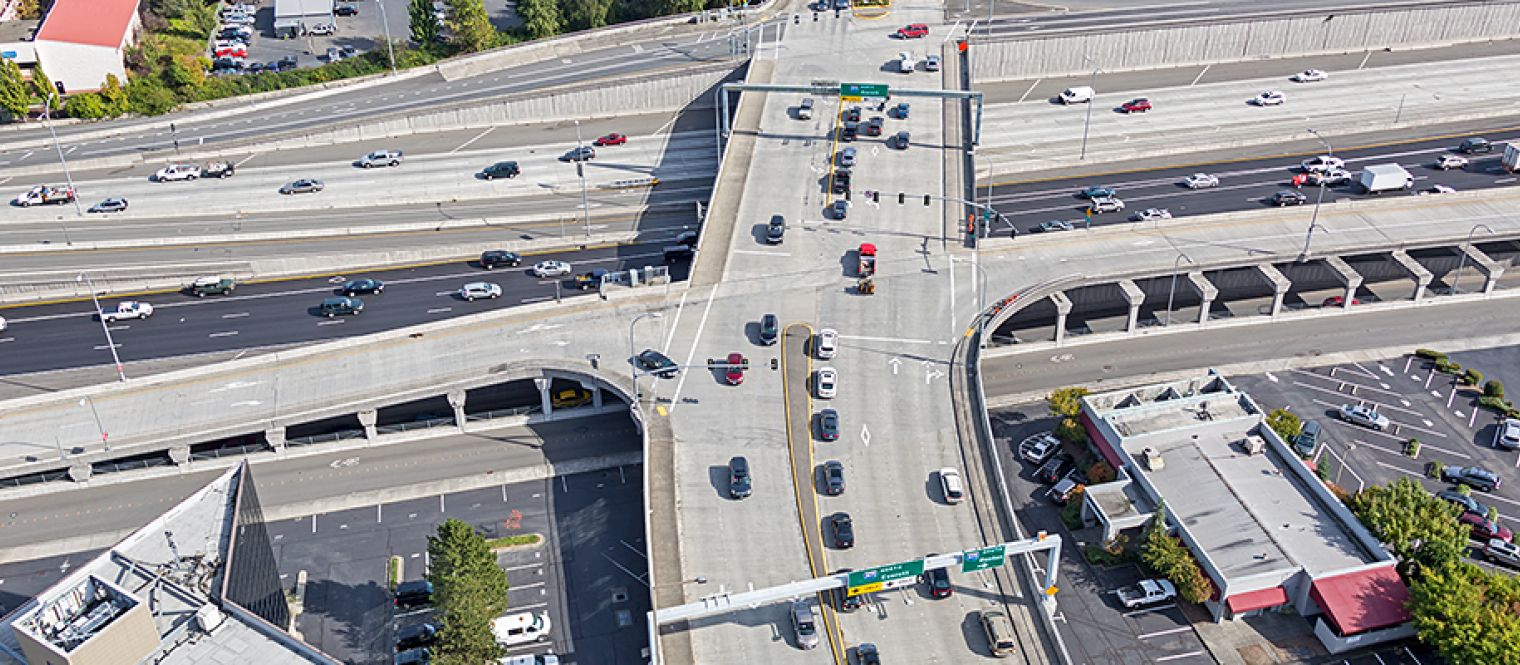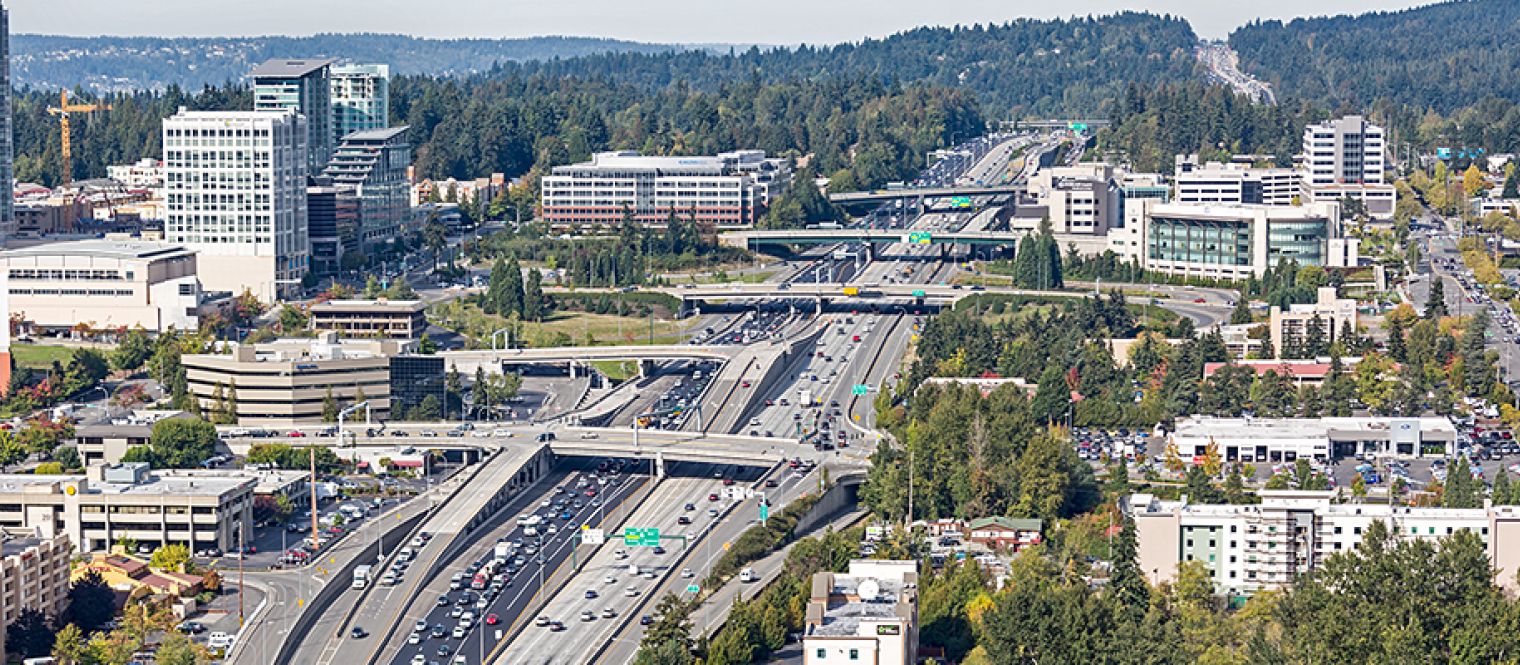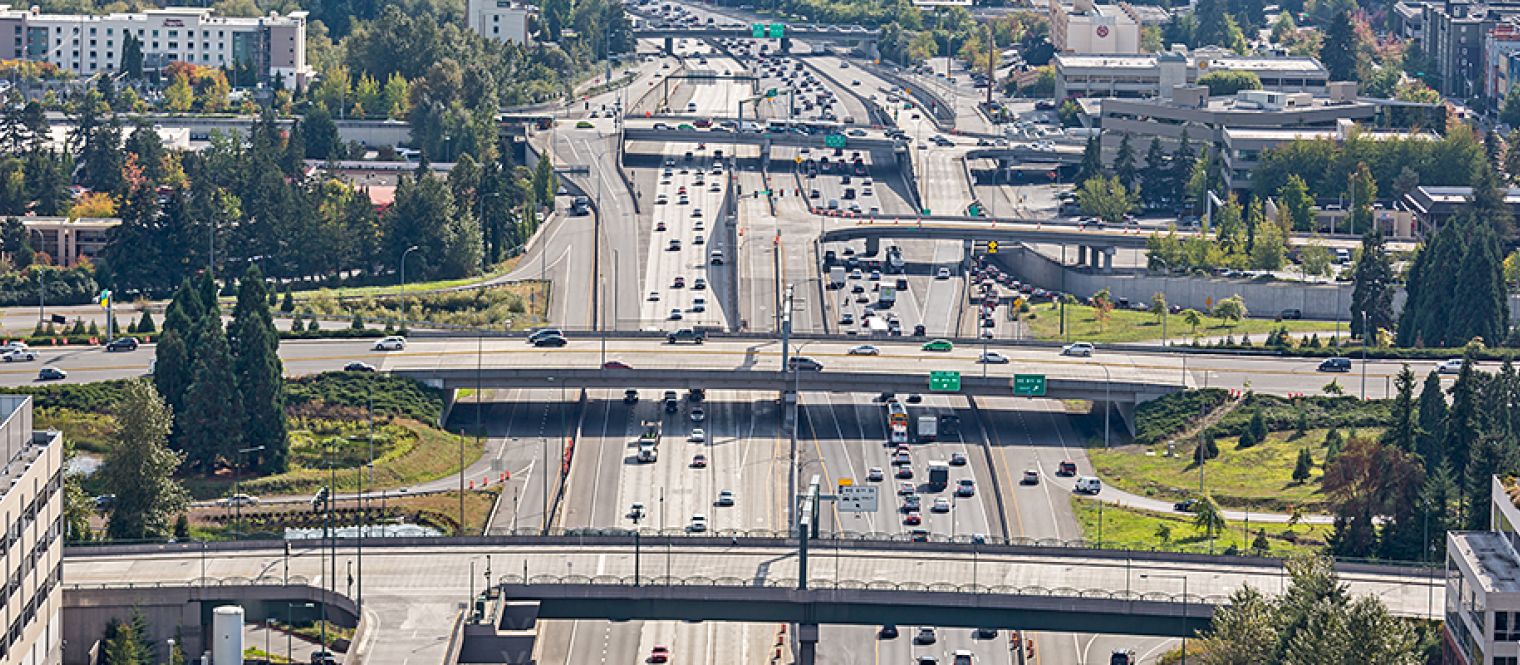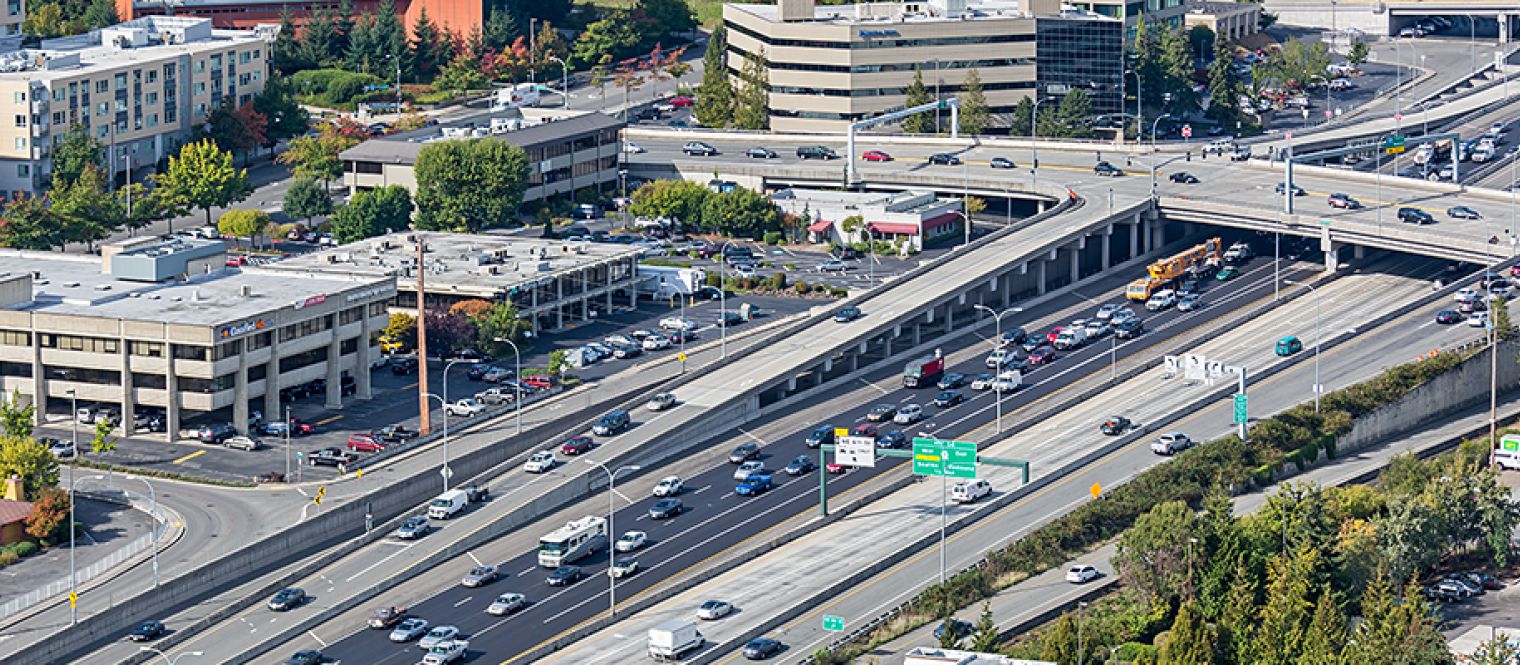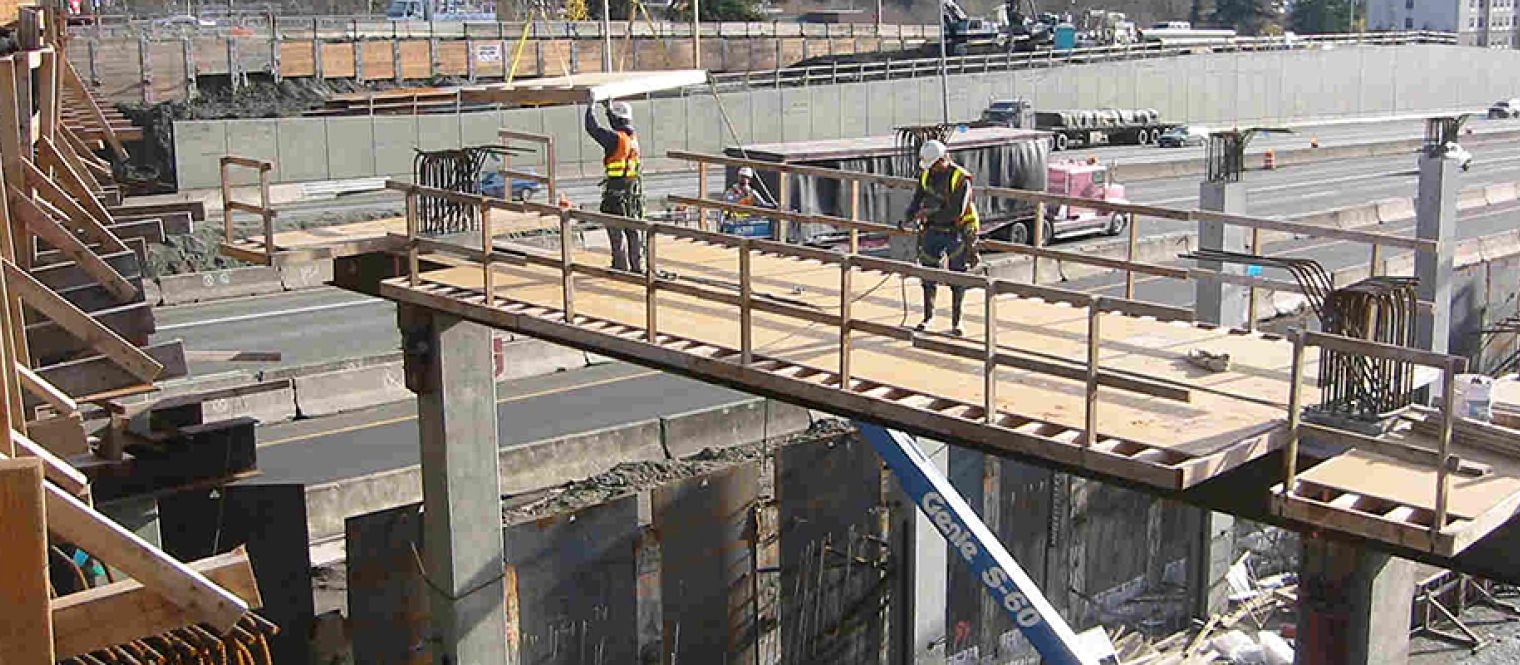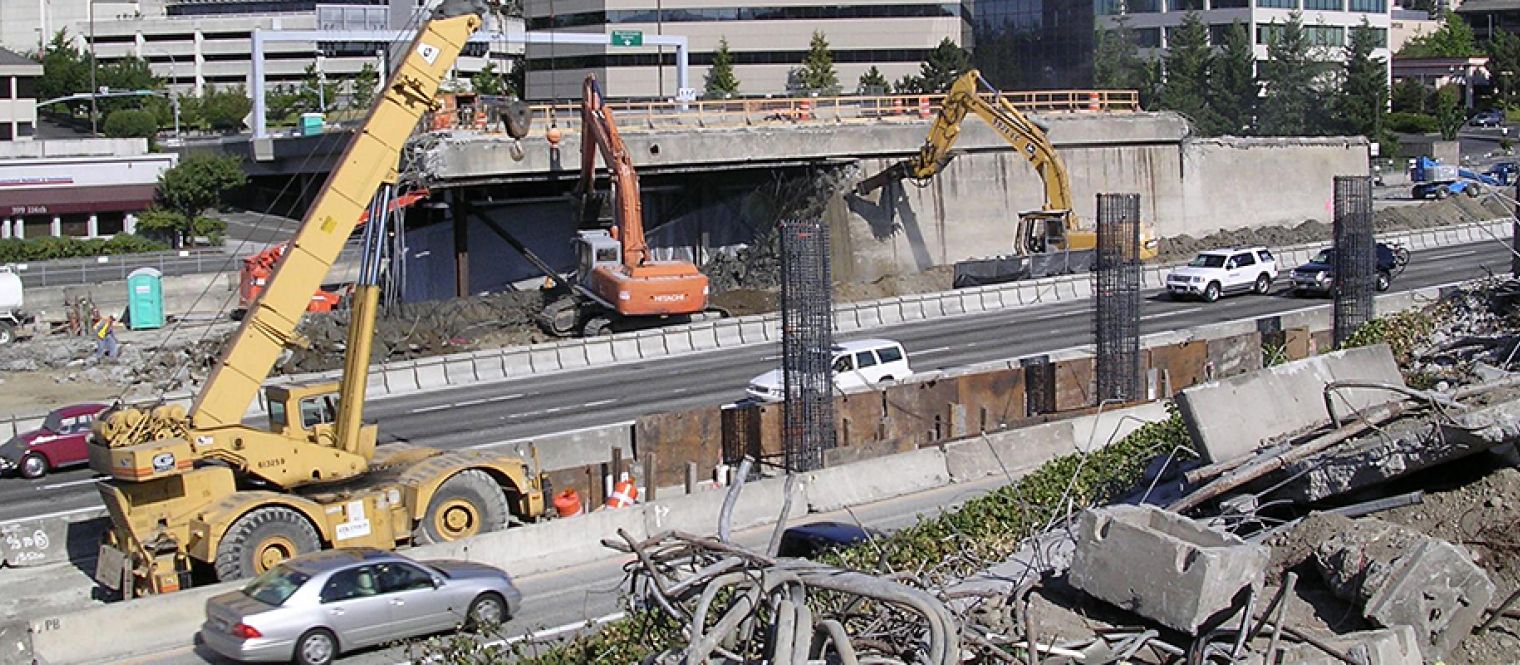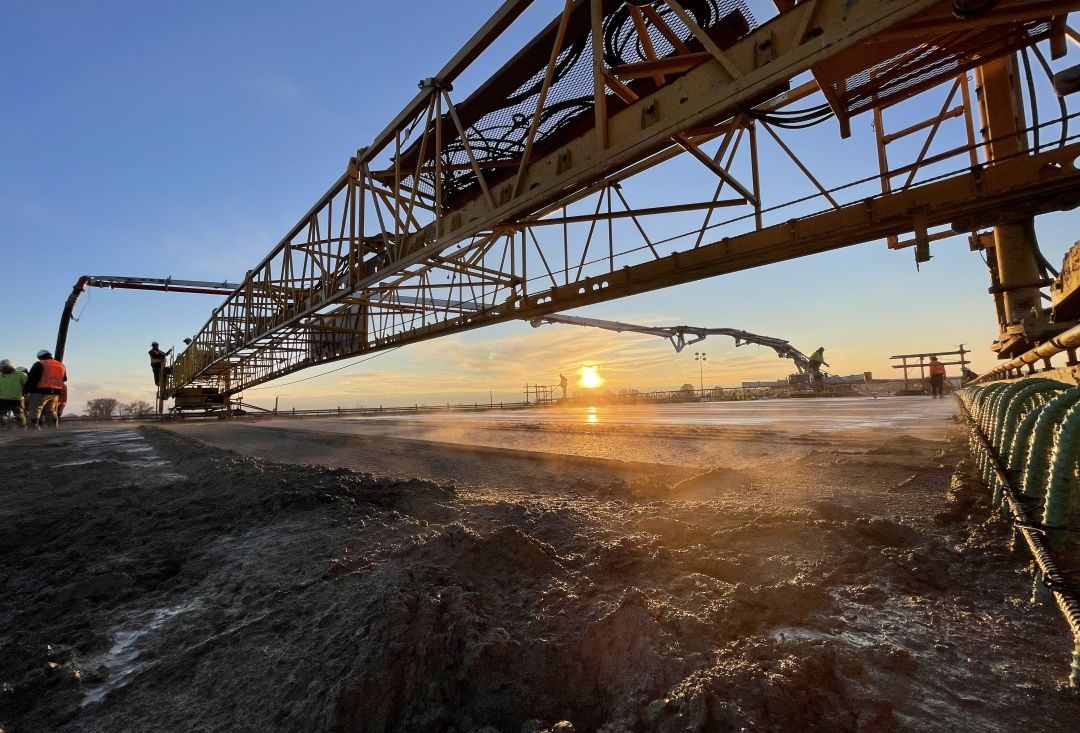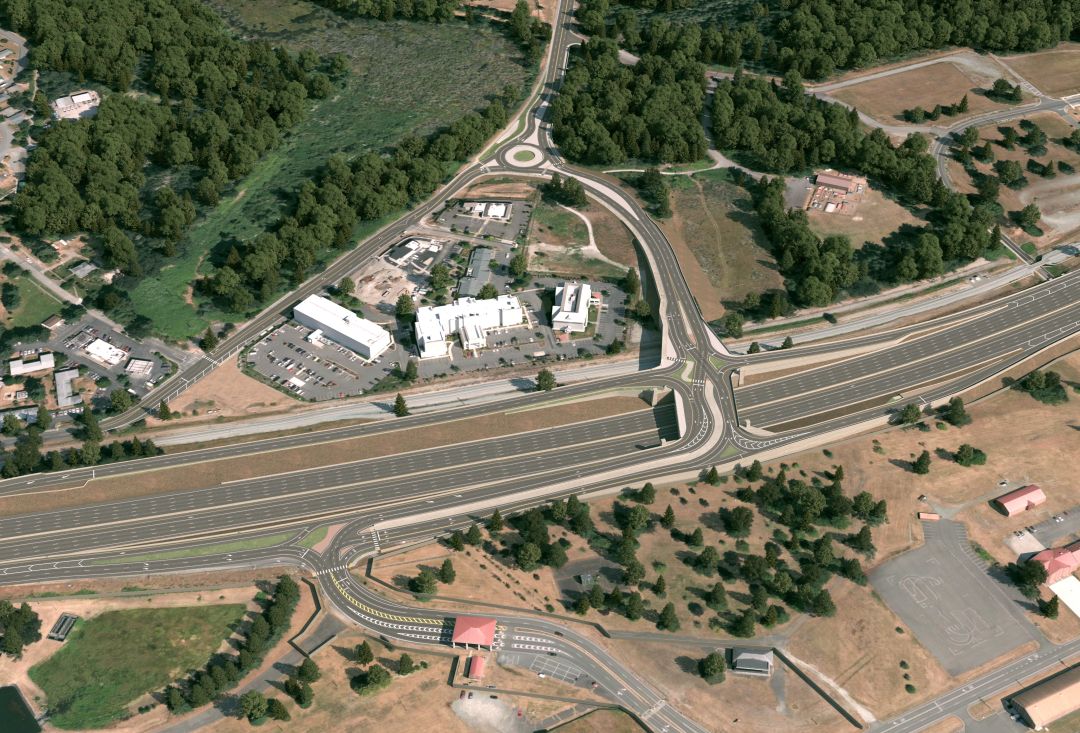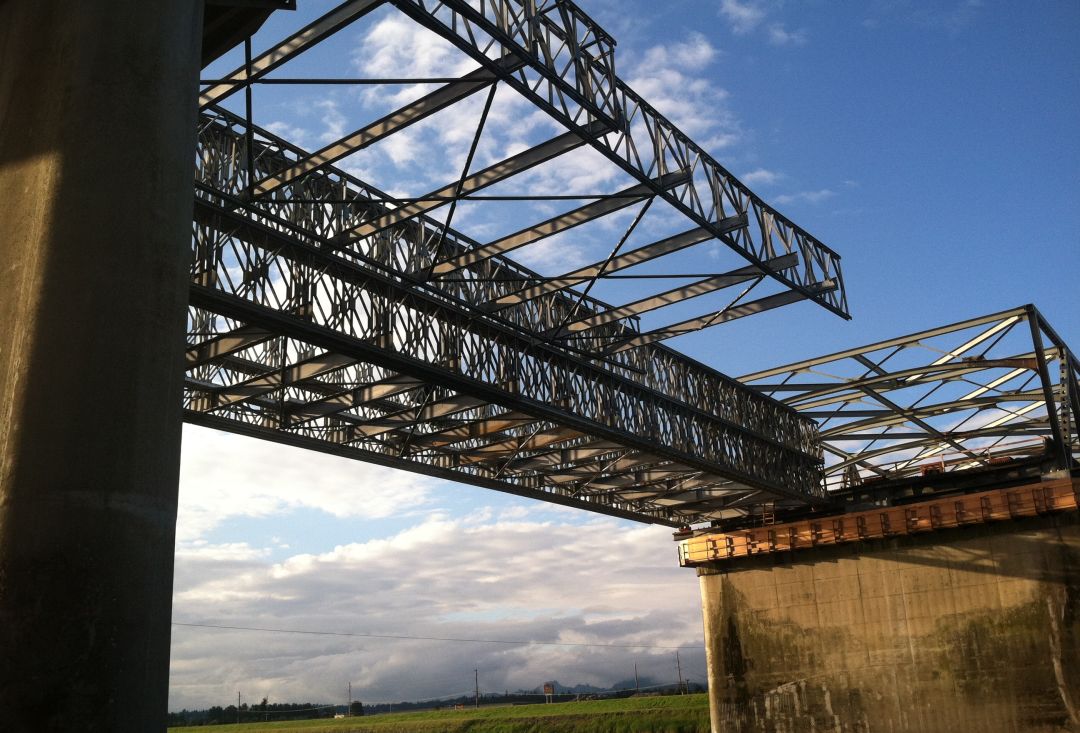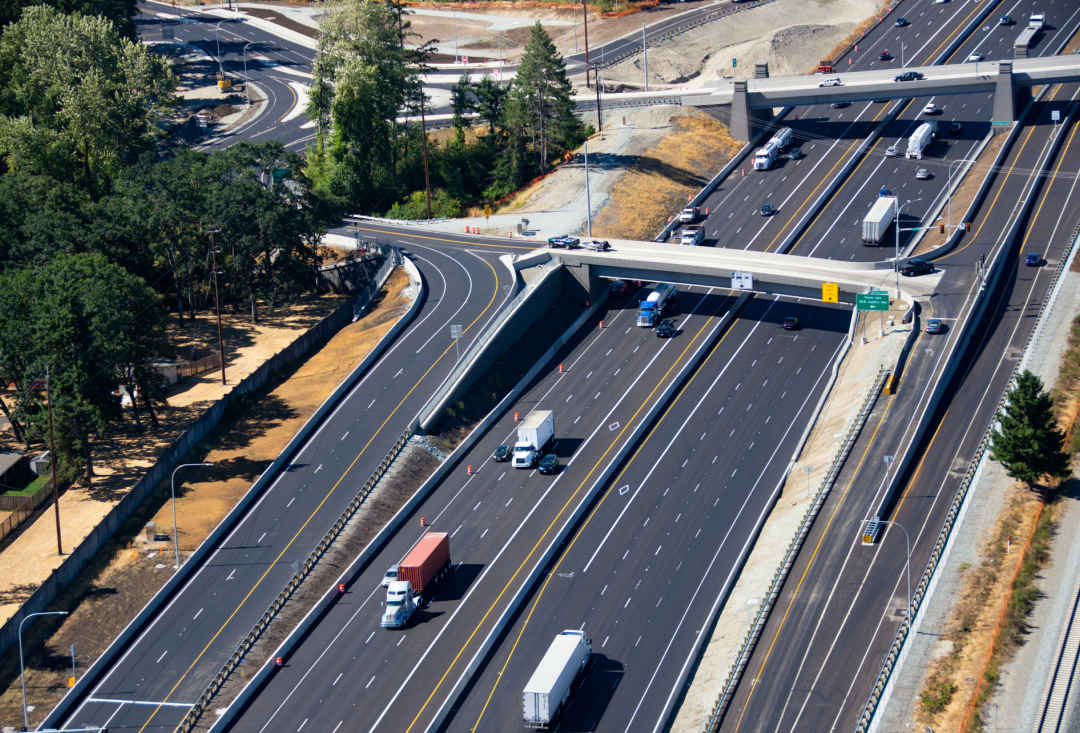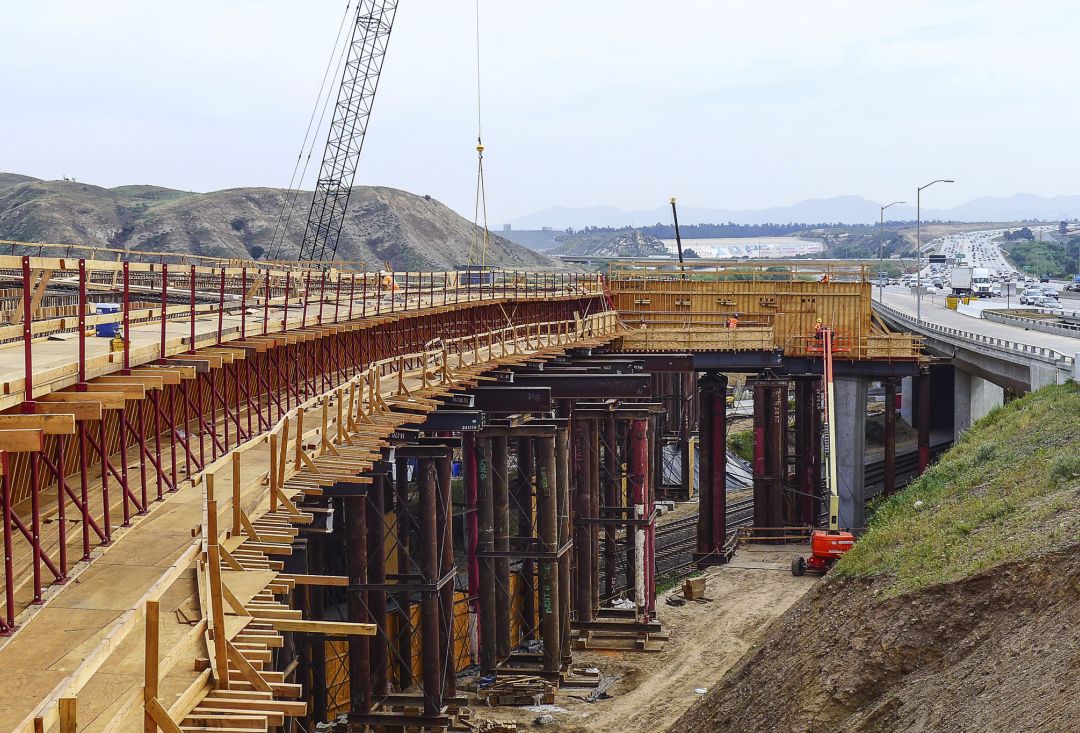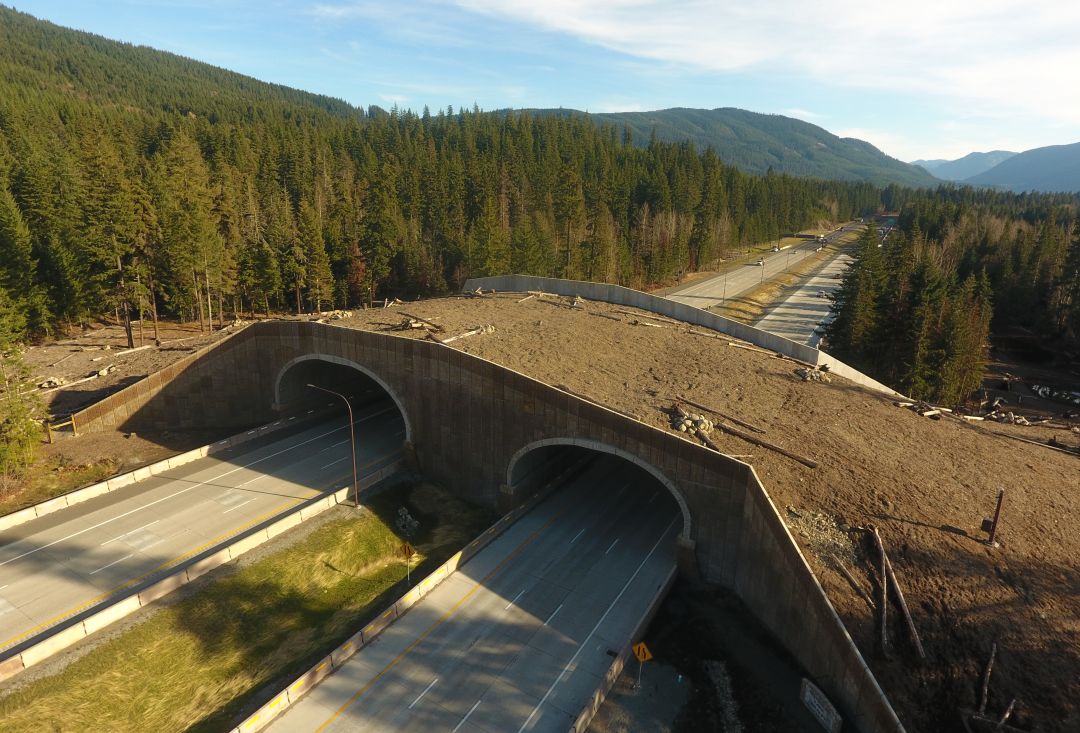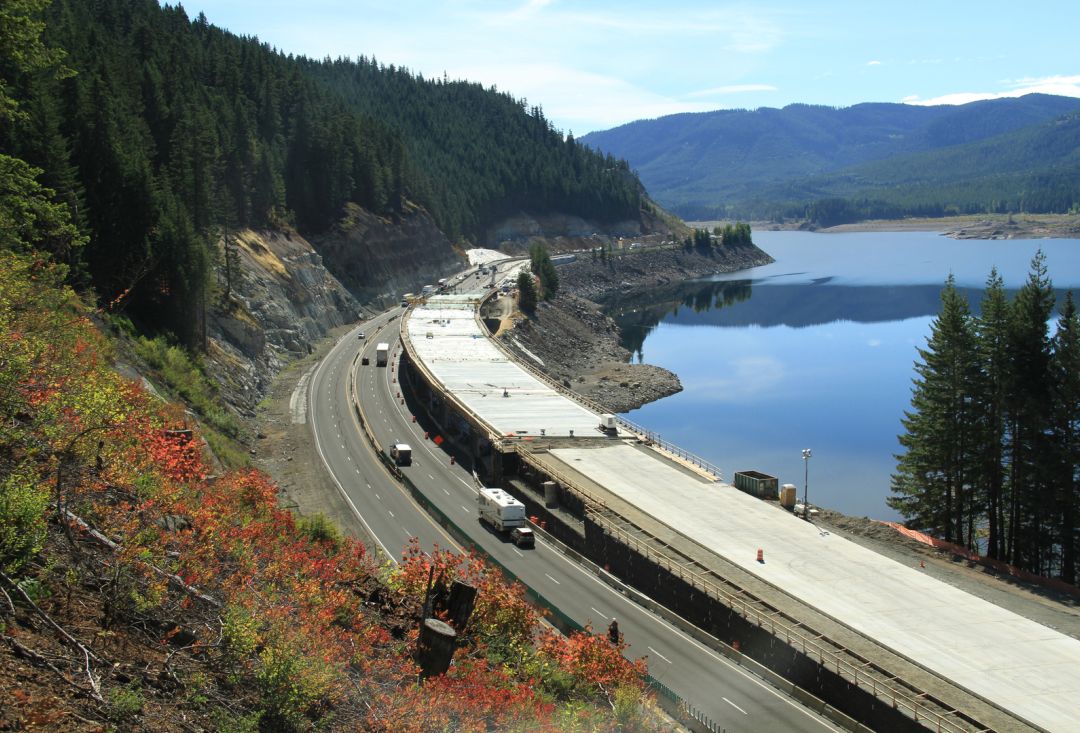Client
Completion Date
Designer
Location
Delivery Method
Division
Contract Value
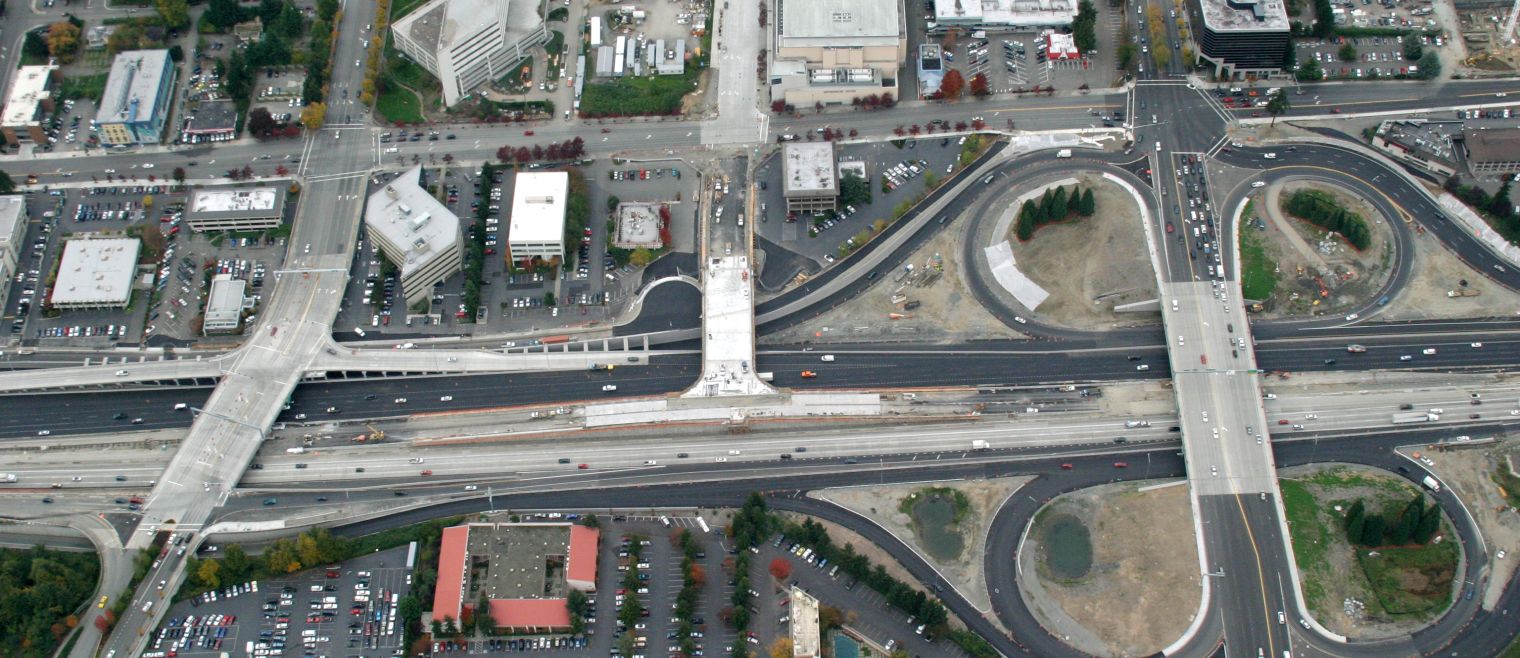
Bellevue Direct Access NE 4th Street/NE 6th Street project comprised two interconnected segments, linked by their proximity and shared purpose. At NE 6th Street, a new bridge was erected to establish a direct connection between the downtown Bellevue transit center and the High Occupancy Vehicle (HOV) lanes on I-405. This bridge extended NE 6th Street eastward, spanning over the southbound lanes of I-405 and culminating in a "T" intersection within the median. From this juncture, ramps extended downward, seamlessly merging with the northbound and southbound HOV lanes. This design facilitated direct access for high occupancy and mass transit vehicles to the transit center and downtown area, allowing them to ingress and egress from the left HOV lane without traversing the mainline lanes to access the right-hand exit.
Two blocks to the south, at NE 4th Street, the existing bridge spanning I-405 was replaced with a wider and more seismically stable structure. The new bridge featured improved northbound and southbound on-/off-ramps. The new bridge was built 3 feet higher than its predecessor, providing adequate vertical clearance for the HOV direct-access ramps to NE 6th Street.
The scope of work included a new southbound collector-distributor lane, extensive retaining walls, Hot Mix Asphalt (HMA) and Portland Cement Concrete Pavement (PCCP) paving, striping, signing, illumination, city street enhancements, drainage systems, utilities, and intelligent transportation systems (ITS).
The project posed considerable challenges related to minimizing traffic disruptions, requiring a collaborative effort involving multiple stakeholders, including the City of Bellevue, WSDOT, Sound Transit, and several other agencies. It stood out as one of the largest Sound Transit Regional Express projects at the time and carried significant visibility, underscoring the paramount importance of achieving its objectives.
